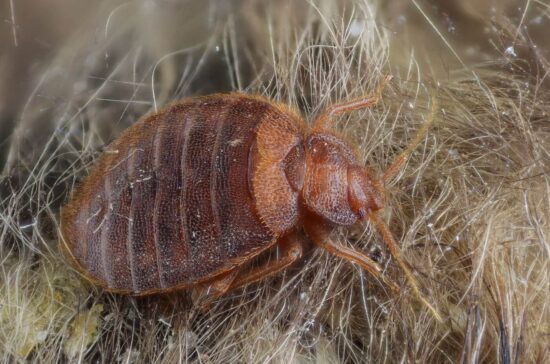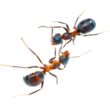Nobody wants to deal with bed bugs, but if you’re reading this, chances are you’ve spotted these tiny pests in your home. The good news is that getting rid of bed bugs fast is possible when you know the right methods. These blood-sucking insects are tough to eliminate, but with the right approach, you can win the battle.
Speed matters when dealing with bed bugs because they multiply quickly. A small problem can become a major infestation in just a few weeks. The key to success is acting fast and using multiple methods together. This guide covers some proven ways to eliminate bed bugs, from DIY solutions you can start today to professional treatments that guarantee results.
Whether you’re dealing with a few bugs or a full infestation, this comprehensive approach will help you take back your home and get peaceful sleep again.
1. Heat Treatment
Heat is the most effective way to kill bed bugs quickly. These pests cannot survive when temperatures reach 113 to 120 degrees Fahrenheit. At higher temperatures of 160 to 180 degrees, they die instantly along with their eggs.
Professional heat treatments are the gold standard for getting rid of bed bugs fast. Exterminators use special equipment to heat entire rooms to 135 to 145 degrees for several hours. This method kills every life stage of bed bugs, including eggs that other treatments might miss. The whole process usually takes one day, making it the fastest complete solution available.
For DIY heat treatment, you have several options. Wash infested clothes and bedding in hot water for 30 minutes, then dry them on high heat for another 30 minutes. You can also place smaller items in black plastic bags and leave them in a hot car when outside temperatures reach 120 degrees. Keep them there for at least 90 minutes.
Professional heat treatment costs between $2,000 and $4,000 for an entire house. While expensive, it’s chemical-free and works in just one day. The main downside is that you need professional equipment to heat whole rooms safely and effectively.
2. Steam Treatment
Steam treatment is another excellent way to get rid of bed bugs without using chemicals. The steam must reach 160 to 180 degrees Fahrenheit at the point where it touches the bugs to be effective. This intense heat kills bed bugs and their eggs on contact.
Steam can penetrate about 3 to 5 inches into soft surfaces like mattresses and furniture. It also reaches up to 2.5 inches into cracks in hardwood floors and baseboards. This makes steam perfect for treating hiding spots that are hard to reach with other methods.
To use steam effectively, start by removing clutter and vacuuming thoroughly. Then systematically treat all surfaces where bed bugs might hide. Focus on mattress seams, box spring crevices, furniture joints, and baseboards. Move the steamer slowly, about one inch per second, and use an infrared thermometer to check that you’re maintaining the right temperature.
You’ll need a commercial-grade steamer that produces steam at the right temperature. Consumer models often don’t get hot enough. The main limitation of steam treatment is that it only kills bugs it directly contacts. You may need multiple treatments, and the process is time-consuming but very effective when done properly.
3. Freezing Method
Freezing is a chemical-free option for smaller items that can’t handle heat treatment. Place infested items in sealed plastic bags and put them in a freezer set to 0 degrees Fahrenheit. Leave them there for at least 4 to 8 days to ensure all bed bugs and eggs are dead.
This method works well for toys, electronics, books, and other heat-sensitive items. You can also use it for clothes and shoes. The key is making sure your freezer actually reaches 0 degrees, so use a thermometer to check the temperature.
Some people try isolating items at room temperature instead of freezing. This can work, but it takes much longer. Bed bugs can survive 2 to 5 months without feeding, so you’d need to keep items sealed for at least that long.
The freezing method is free if you have freezer space, and it’s completely safe for sensitive items. However, it’s slow and only works for smaller objects. Home freezers sometimes aren’t cold enough, and the long timeline makes this less practical for getting rid of bed bugs fast.
4. Professional Chemical Treatments
Professional exterminators have access to powerful chemicals that aren’t available to consumers. These treatments are often the most reliable way to get rid of bed bugs, especially for large infestations. Professionals know exactly which chemicals work best and how to apply them safely.
The most effective professional chemicals include neonicotinoids, which attack the bed bugs’ nervous system. These work even on bed bugs that have become resistant to older pesticides. Desiccants are another powerful option that destroy the bugs’ protective coating, causing them to dry out and die.
Professional treatment typically costs between $1,500 and $5,000 for an entire home. Most infestations need 2 to 4 visits over 3 to 6 weeks to completely eliminate all bugs. This might seem expensive, but the success rate is much higher than DIY methods.
You should call professionals when you have a large infestation, when DIY methods have failed, or when bed bugs have spread to multiple rooms. Look for companies that guarantee their work for at least one year and use integrated pest management approaches.
5. Vacuuming
Vacuuming is one of the first steps in getting rid of bed bugs, even though it won’t solve the problem by itself. It immediately removes many visible bugs and can help reduce their numbers while you prepare other treatments.
Focus your vacuuming on all the places bed bugs like to hide. This includes mattress seams, box spring crevices, bed frames, furniture joints, and baseboards. Use the crevice tool attachment to get into tight spaces. Vacuum slowly and thoroughly, paying special attention to seams and folds.
The main limitation of vacuuming is that it doesn’t remove eggs very well, and it can’t reach bugs that are hiding deep in cracks and crevices. However, it’s an important first step that can remove a significant number of bugs immediately.
Always seal the vacuum bag in a plastic bag and throw it away in an outdoor trash can right after vacuuming. If you use a bagless vacuum, empty it immediately and wash the canister with hot soapy water. Vacuum daily during the treatment period to keep removing bugs and monitor your progress.
6. Mattress and Box Spring Encasements
Encasements are special zip-up covers that completely surround your mattress and box spring. They serve two important purposes in getting rid of bed bugs. First, they trap any bugs already living in your mattress, cutting them off from their food source. Second, they prevent new bugs from getting into your mattress.
Quality encasements are made from tightly woven fabric that bed bugs cannot bite through or crawl through. Look for encasements that are lab-certified for bed bug protection and have reinforced seams and high-quality zippers. Make sure to get separate encasements for both your mattress and box spring.
Once you install encasements, keep them in place for 12 to 18 months. This is longer than the bed bug life cycle, ensuring that any trapped bugs die before they can reproduce. Check the encasements regularly for tears or loose zippers that could let bugs escape.
Encasements cost much less than professional treatment and provide long-term protection. They’re also useful for monitoring because any new bug activity will be visible on the outside of the encasement. This makes them an excellent tool for both treatment and prevention.
7. Bed Bug Interceptors
Interceptors are small cup-like devices that go under the legs of your bed. They create a barrier that prevents bed bugs from climbing up to reach you while you sleep. They also catch bugs that are already in your bed when they try to climb down.
These devices work because bed bugs can’t easily climb the smooth walls inside the interceptors. When they fall in, they get trapped. This not only protects you from bites but also helps you monitor whether you still have active bed bugs in your room.
Interceptors cost just a few dollars each, and you’ll need about 8 to 12 for a typical one-bedroom apartment. Place them under all the legs of your bed, and also under furniture legs in other rooms where people sit or sleep. Check them weekly to see if you’re catching any bugs.
For interceptors to work best, your bed shouldn’t touch the walls, other furniture, or the floor. Pull the bed away from the wall and make sure bedding doesn’t hang down to the floor. This creates an “island” that bed bugs can only reach by climbing through the interceptors.
8. Desiccant Dusts
Desiccant dusts work by destroying the waxy coating that protects bed bugs from drying out. Once this coating is damaged, the bugs lose moisture and die. This method is especially valuable because it works even on bed bugs that have become resistant to other pesticides.
The two main types of desiccant dusts are silica aerogel (sold as CimeXa) and diatomaceous earth. Silica aerogel is generally more effective, but both can work when applied properly. Only use products that are registered with the EPA specifically for bed bug control.
Apply desiccant dusts only to cracks and crevices where people and pets won’t come into contact with them. Use a small brush or squeeze bottle to place thin layers in areas where bed bugs hide. A little goes a long way, and thick layers are actually less effective.
Desiccants work slowly, taking several weeks to months to eliminate an infestation. However, they provide excellent long-term control and continue working for months after application. This makes them a good complement to faster-acting treatments like heat or steam.
9. Clutter Removal and Sanitation
Removing clutter is one of the most important steps in getting rid of bed bugs fast. Bed bugs love cluttered areas because they provide lots of hiding spots. By clearing out unnecessary items, you make it much easier to find and treat the remaining bugs.
Start by removing items you don’t need, especially things like old newspapers, magazines, and unused furniture. Place items you want to keep in sealed plastic bags or containers after treating them. This prevents bugs from hiding in your belongings and makes your other treatments more effective.
Pay special attention to areas around beds and other places where people sleep or sit. Clear out items from under beds, around nightstands, and near couches. The goal is to eliminate as many potential hiding spots as possible.
Store items you’re keeping in hard plastic containers rather than cardboard boxes. Bed bugs can’t easily get into sealed plastic containers, but they can hide in the crevices of cardboard. This simple change can prevent reinfestation of your clean belongings.
10. Laundry Protocol
Proper laundry treatment is essential for killing bed bugs in clothes, bedding, and other washable items. The key is using high heat for both washing and drying. Wash items in water that’s at least 120 degrees Fahrenheit for 30 minutes, then dry them on high heat for another 30 minutes.
Interestingly, drying first can be more effective than washing first. Bed bugs can sometimes survive washing machines, but they can’t survive the high heat of dryers. So consider putting items straight into the dryer on high heat before washing them.
Use water-soluble laundry bags to transport contaminated items to your washing machine. These special bags dissolve in the wash, so you don’t have to handle infested items directly. This prevents bugs from spreading to other areas of your home.
Treat all washable items from infested rooms, including clothes, bedding, curtains, and stuffed animals. Even items that don’t look infested should be washed because bed bugs and their eggs can be very small and hard to see. Bag everything immediately to prevent bugs from escaping during transport.
11. DIY Chemical Treatments
Store-bought bed bug sprays and treatment kits can help with minor infestations, but they’re usually not strong enough for serious problems. Most over-the-counter products cost between $40 and $100 and contain lower concentrations of active ingredients than professional treatments.
Common ingredients in DIY treatments include pyrethroids, essential oils, and small amounts of newer chemicals like neonicotinoids. While these can kill some bed bugs, many populations have developed resistance to the most common ingredients.
Never use foggers or “bug bombs” for bed bugs. These products actually make the problem worse by scattering bugs to new areas without killing them. The spray from foggers can’t reach the cracks and crevices where bed bugs hide, making them largely useless for this pest.
DIY chemical treatments work best as part of a larger strategy or for very early, minor infestations. They can also be useful for spot treatments in areas where you’ve seen individual bugs. However, for how to get rid of bed bugs completely, you’ll usually need stronger methods.
12. Professional Extermination
Professional extermination is often the most reliable solution for serious bed bug problems. Pest control experts have the training, equipment, and access to powerful treatments that most homeowners can’t get. They also know how to combine different methods for maximum effectiveness.
Call professionals when you have bed bugs in multiple rooms, when DIY methods haven’t worked after several weeks, or when you keep finding new bugs despite your efforts. Professional treatment costs between $1,500 and $7,500 depending on the size of your home and the severity of the infestation.
Look for companies that guarantee their work for at least one year. Bed bugs can survive for months without feeding, so shorter guarantees aren’t worth much. Also choose companies that use integrated pest management, which combines multiple treatment methods rather than relying only on pesticides.
The professional treatment process usually starts with a thorough inspection that costs $50 to $100. Based on what they find, they’ll create a customized treatment plan. Most infestations require 2 to 4 follow-up visits to ensure complete elimination. While expensive, professional treatment has the highest success rate for getting rid of bed bugs completely.
Creating Your Action Plan
The most effective approach to getting rid of bed bugs combines several of these methods. Start with immediate actions like vacuuming and clutter removal, then add longer-term solutions like encasements and interceptors. For serious infestations, professional treatment combined with your own prevention efforts usually works best.
Most bed bug infestations take 3 to 6 weeks to eliminate completely, even with professional treatment. This is because you need to break the bug’s life cycle and catch any eggs that hatch after the initial treatment. Be patient and consistent with your chosen methods.
Prevention is just as important as treatment. Regular monitoring with interceptors, keeping clutter to a minimum, and being careful when traveling or buying used furniture can prevent future infestations. Remember that getting rid of bed bugs fast requires quick action, but completely eliminating them takes time and persistence.
The key to success is not giving up too early. Bed bugs are tough opponents, but with the right combination of methods and enough persistence, you can eliminate them from your home and get back to peaceful nights of sleep.


